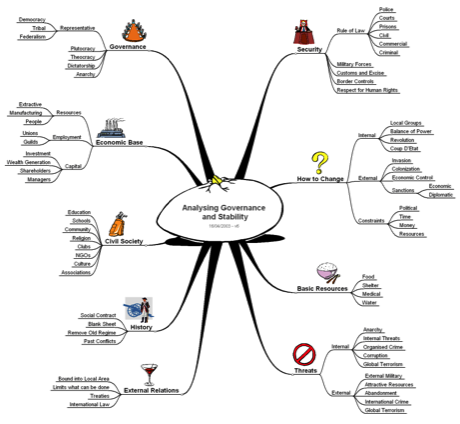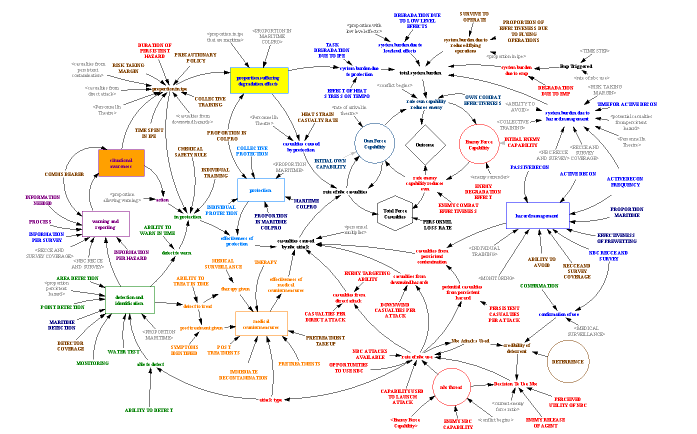System Modelling
System Modelling is the term that we use to describe our approach. The approach uses ideas and modelling tools from System Dynamics but takes in a broader spectrum of methods, including tools for building models up from simple qualitative descriptions of systems or their scope all the way to complex simulations.
System Modelling starts with a problem, something that a client wishes to come to grips with. It then moves on to structuring that problem, using graphical and other tools.
Once the problem has been structured it is well enough understood that consideration can be given to the data that is available to describe what is happening in the system. Organising and analysing that data can show how important aspects of the system inter-relate and form an important first step to modelling. Jumping to modelling without a quantitative understanding of the problem risks developing models that are based upon wishful thinking rather than a realistic understanding of the problem.
The next step is then to build a model of the problem. Since the model needs to be a tool for developing understanding it is usually preferable to develop the model from the depictions that were arrived at in the problem structuring phase. Thus, the understanding developed in the problem structuring phase can be built directly into the final model. The model also needs to be as parsimonious as possible. A simple model can always be extended, an overly complex model will lead to drowning in detail. Ideally we prefer to keep our models to a single sheet of paper - albeit sometimes this needs to be A3!
The final step is to use the model to explore the system being modelled, asking questions such as the impact of changing different policies, making different assumptions about how these different policies interact with the rest of the problem space.
System Modelling starts with a problem, something that a client wishes to come to grips with. It then moves on to structuring that problem, using graphical and other tools.
Once the problem has been structured it is well enough understood that consideration can be given to the data that is available to describe what is happening in the system. Organising and analysing that data can show how important aspects of the system inter-relate and form an important first step to modelling. Jumping to modelling without a quantitative understanding of the problem risks developing models that are based upon wishful thinking rather than a realistic understanding of the problem.
The next step is then to build a model of the problem. Since the model needs to be a tool for developing understanding it is usually preferable to develop the model from the depictions that were arrived at in the problem structuring phase. Thus, the understanding developed in the problem structuring phase can be built directly into the final model. The model also needs to be as parsimonious as possible. A simple model can always be extended, an overly complex model will lead to drowning in detail. Ideally we prefer to keep our models to a single sheet of paper - albeit sometimes this needs to be A3!
The final step is to use the model to explore the system being modelled, asking questions such as the impact of changing different policies, making different assumptions about how these different policies interact with the rest of the problem space.

